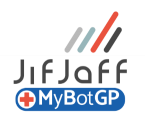As we integrate automation (RPA) and intelligent automation (IA) into our workforces, we move toward a more digital era, so will our workforce. The benefits are well documented: speed, lower cost, increased resilience, and standardisation, to name a few.
Companies are starting to review how the teams are structured and go about their work, and are looking for areas to add process automation/AI into their business. They aren’t also thinking about the redefinition of roles and responsibilities. Redefining where the responsibilities lie as your IT department (they own the software) will now support sales, finance or HR etc. who own these core functions.
Who’s ensuring you’re using the best automation tools, maximising each robot to ensure no wasted spend on licencing? Different automation tools are good at other things, and they can work together. Mapping security implications, setting the correct expectations in capability for the business units, i.e. the bots will do this in an hour to hit the SLA and strategic input from management. Making sure you don’t automate things that won’t be relevant soon, as you may not have known—so avoiding wasted development time and licencing cost.
We see this time and time again, and it isn’t very reassuring. People not taking the integration of RPA & Intelligent Automation seriously enough. They are treating a digital workforce like a new database or email package. Not only does it result in time and money, but they also lose by not benefitting from the tremendous value intelligent automation will deliver.
If you get it right, you can deliver more or the same at a lower cost across every team in your business. You will also free your team to be more creative, customer-facing and productive.
Using a Nine Pillar RPA COE framework will ensure all of the above is taken into consideration. It is the hub that manages your business, automation, people and AI. Team structures, roles & responsibilities, ownership of processes, governance, strategic planning, and continuous capability assessment.
The RPA COE is the coordination and management function for your blended workforce. It doesn’t need to be big, but it must be there.

